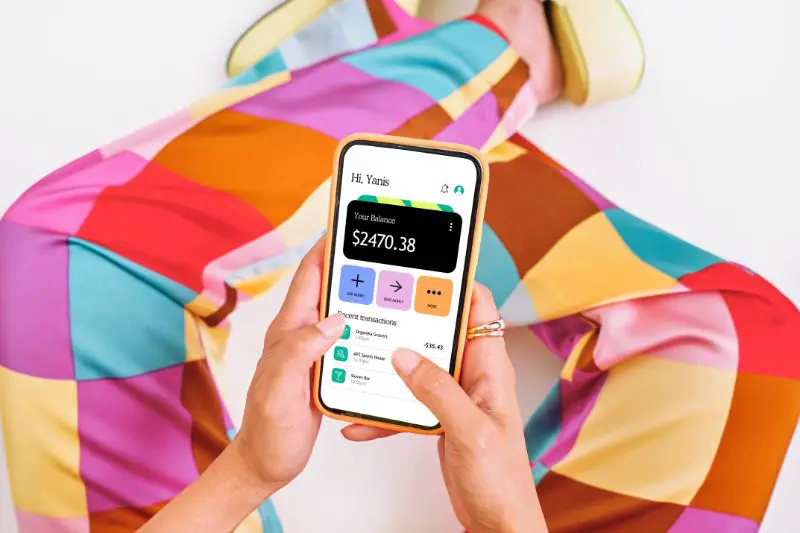
Have you ever wondered why some fitness apps skyrocket in popularity while others struggle to gain traction? The secret lies in knowing exactly who they’re designed for. Whether it’s a busy professional squeezing in quick workouts, a dedicated athlete tracking performance, or someone just starting their fitness journey, each group has unique needs and preferences.
Understanding the target market for fitness apps isn’t just about demographics—it’s about motivation, behavior, and expectations. In this article, we’ll dive into the key audiences that drive the success of fitness apps, uncover what they’re looking for, and explore how app developers and marketers can create experiences that truly resonate. Let’s break down who’s really using these apps and why it matters.
Why Identifying the Right Target Market Matters

Choosing the right audience for a fitness app isn’t just a marketing strategy—it’s the foundation for long-term success. Without a clear understanding of who your users are, even the most innovative app can struggle to gain traction. Let’s explore why defining your target market is essential and how it shapes every aspect of app development and promotion.
Increased User Engagement and Retention
Fitness apps that cater to a well-defined audience see higher engagement rates. Users stick with apps that feel personalized to their needs. For example, an app designed for beginners with guided workouts and motivational prompts will be far more effective for newcomers than one packed with advanced performance analytics.
Retention also improves when users feel an app evolves with them. Consider MyFitnessPal, which started primarily as a calorie tracker but expanded features to support different fitness levels and goals, keeping users engaged long-term.
Better Marketing and Customer Acquisition
Targeting the right users allows for more precise and cost-effective marketing. Instead of broad, generalized advertising, fitness app developers can focus on the platforms and messaging that resonate most with their ideal users.
For example:
- Ads promoting quick, high-intensity workouts perform well among busy professionals on LinkedIn.
- Social media campaigns featuring user-generated success stories attract community-driven fitness enthusiasts on Instagram and TikTok.
- Detailed blog content about progressive training methods can appeal to serious athletes searching for expert guidance.
By understanding where your audience spends time and what motivates them, marketing efforts become significantly more impactful.
Feature Development Based on User Needs
A fitness app’s core features should align with the expectations of its primary audience. Consider these examples:
- Beginners need structured plans, instructional videos, and habit-tracking tools.
- Athletes look for advanced performance metrics, integration with wearables, and periodization plans.
- Weight loss seekers prioritize meal tracking, calorie monitoring, and progress visualization.
Apps that try to serve everyone often dilute their effectiveness. Instead, the most successful fitness apps—like Nike Training Club for diverse training styles or Noom for weight loss coaching—excel by focusing on the specific needs of their audience.
Competitive Advantage in a Crowded Market
The fitness app industry is projected to reach $30 billion by 2026, with thousands of apps competing for user attention. To stand out, an app must differentiate itself by deeply understanding and serving its niche audience.
For example, Strava dominates the endurance sports market because it caters specifically to runners and cyclists, offering features like route tracking, social leaderboards, and performance analysis. This specialization has helped it build a dedicated, loyal user base.
Building a Sustainable Business Model
Monetization strategies work best when they align with user expectations. Subscription models, freemium offerings, and in-app purchases should provide clear value to the target audience.
- Casual users may prefer a free app with optional paid features.
- Dedicated athletes might be more willing to pay for premium analytics and coaching.
- Community-driven users may engage with social features that support membership-based models.
By understanding your market, you can create a pricing strategy that maximizes revenue while keeping users satisfied.
Understanding your target market isn’t just a preliminary step—it’s an ongoing process that shapes every decision from development to marketing and user experience. In the next section, we’ll dive into the key audience segments that drive fitness app success and what they’re looking for.
Primary Target Markets for Fitness Apps

The fitness app industry caters to a wide range of users, each with distinct needs, goals, and preferences. Understanding these target markets allows app developers and marketers to create personalized experiences that drive engagement and retention. Below are the key audience segments and what they seek in a fitness app.
Fitness Enthusiasts and Athletes
This group consists of individuals who already maintain an active lifestyle and seek tools to optimize their training. They prioritize performance tracking, progress analytics, and advanced workout customization.
Key Features They Value:
- Data-driven insights: Detailed workout metrics, heart rate tracking, and VO2 max analysis.
- Wearable integration: Seamless syncing with devices like Garmin, Fitbit, and Apple Watch.
- Periodized training plans: Structured programs for strength, endurance, or sport-specific goals.
Example: Strava has built a strong following among runners and cyclists by offering GPS tracking, performance comparisons, and social leaderboards.
Beginners and Casual Users
These users are just starting their fitness journey and need guidance, motivation, and ease of use. They often look for an intuitive app that simplifies workouts and keeps them engaged.
Key Features They Value:
- Step-by-step guidance: Video demonstrations and audio coaching.
- Habit tracking: Streaks, reminders, and daily check-ins.
- User-friendly interface: Minimal learning curve with easy navigation.
Example: Nike Training Club offers structured, beginner-friendly workout programs with clear instructions, making it an excellent choice for newcomers.
Weight Loss Seekers
Many people turn to fitness apps for weight management, expecting a combination of exercise and nutrition support. Apps targeting this segment must provide a holistic approach to tracking progress.
Key Features They Value:
- Calorie and macro tracking: Integrated food logs with barcode scanning.
- Goal-based workout plans: Customizable routines for fat loss.
- Progress visualization: Weight trends, body measurement tracking, and before-and-after comparisons.
Example: Noom leverages behavioral science to help users adopt healthier eating and exercise habits, making it a popular choice for sustainable weight loss.
Busy Professionals
Time is a major barrier for this audience. They need an app that delivers quick, efficient workouts they can fit into their daily routine.
Key Features They Value:
- Short, high-intensity workouts: Sessions that last 10–30 minutes.
- AI-generated workout plans: Adaptive training based on schedule and fitness level.
- Offline access: The ability to work out anytime, anywhere.
Example: The 7 Minute Workout app is designed specifically for busy individuals, providing fast, effective workouts that require no equipment.
Home Workout Enthusiasts
Many users prefer to exercise at home rather than going to a gym. This segment requires an app that delivers diverse workout options without specialized equipment.
Key Features They Value:
- Bodyweight and minimal-equipment workouts: Effective routines using resistance bands, dumbbells, or no equipment.
- Streaming and virtual classes: Live or on-demand sessions for variety and motivation.
- Space-conscious programs: Exercises that don’t require large workout areas.
Example: Peloton has successfully captured this market by offering high-quality virtual classes across different fitness disciplines, from yoga to strength training.
Seniors and Special Populations
Older adults and individuals with specific health concerns, such as chronic conditions or limited mobility, need fitness apps that cater to their unique requirements.
Key Features They Value:
- Low-impact exercises: Chair-based routines, yoga, and stretching programs.
- Health monitoring: Heart rate, blood pressure tracking, and fall detection.
- Simple, accessible design: Large buttons, clear instructions, and voice-guided workouts.
Example: SilverSneakers GO is tailored for older adults, offering low-impact exercises and wellness tracking in an easy-to-use format.
Social and Community-Driven Users
For some users, motivation comes from connecting with others. Community-driven fitness apps encourage social interaction, competition, and accountability.
Key Features They Value:
- Leaderboards and challenges: Competitive elements that drive engagement.
- Group workouts and coaching: Virtual classes or team-based programs.
- Social sharing and support: Forums, live chats, and integration with social media.
Example: Fitbit’s social features allow users to compete with friends, join challenges, and share achievements, fostering a strong sense of community.
Key Factors That Influence Fitness App Adoption

Understanding what drives users to download, engage with, and remain loyal to a fitness app is essential for developers and marketers. Various factors influence adoption, ranging from usability to personalization. Addressing these aspects effectively can significantly improve user acquisition and retention.
Ease of Use and User Experience
A seamless, intuitive interface is critical for first-time users. If an app is difficult to navigate, people are more likely to abandon it.
Best Practices:
- Ensure a simple onboarding process with guided tutorials.
- Use a clean, organized layout with clear labels and icons.
- Provide easy access to essential features such as workout plans and progress tracking.
Example: MyFitnessPal’s straightforward logging system makes it easy for users to track their meals and workouts without frustration.
Personalization and Customization
Users expect fitness apps to cater to their unique goals, fitness levels, and preferences. Personalized experiences increase engagement and satisfaction.
Best Practices:
- Offer AI-driven recommendations based on user data.
- Allow users to customize workout plans, difficulty levels, and scheduling.
- Provide adaptive coaching that adjusts based on progress and feedback.
Example: Freeletics tailors workouts to individual fitness levels, ensuring users receive appropriate challenges.
Integration with Wearables and Other Apps
Many users rely on multiple fitness tools, such as smartwatches, heart rate monitors, and calorie-tracking apps. Seamless integration enhances the user experience.
Best Practices:
- Ensure compatibility with popular wearables like Apple Watch, Garmin, and Fitbit.
- Sync workout and nutrition data across platforms for a comprehensive health overview.
- Provide real-time data tracking to enhance accuracy and motivation.
Example: Strava integrates with GPS devices, heart rate monitors, and cycling power meters, making it a top choice for endurance athletes.
Community and Social Engagement
For many users, fitness is more enjoyable with social support. An app that fosters a sense of community can improve motivation and retention.
Best Practices:
- Include features like leaderboards, group challenges, and virtual classes.
- Enable users to share achievements, workout stats, and progress.
- Offer in-app messaging and discussion forums for peer interaction.
Example: Fitbit’s community challenges encourage users to stay active by competing with friends and family.
Cost and Pricing Model
Pricing plays a crucial role in adoption. Users are more likely to commit if they see clear value in either a free or premium version.
Best Practices:
- Offer a freemium model with essential features at no cost.
- Provide a transparent pricing structure for premium content.
- Use limited-time trials or discounts to encourage subscriptions.
Example: Peloton offers a free trial for its digital membership, allowing users to explore its extensive library of workouts before committing.
Content Quality and Variety
Users seek engaging and diverse workout content to prevent boredom and stagnation. High-quality programs keep users motivated and coming back.
Best Practices:
- Regularly update content with new workouts, challenges, and training plans.
- Include video tutorials and professional instructor guidance.
- Offer a mix of workout types, such as strength training, yoga, and HIIT.
Example: Apple Fitness+ provides a constantly evolving library of workouts with expert trainers across multiple disciplines.
Strategies to Effectively Reach Your Target Market

Successfully marketing a fitness app requires a deep understanding of the audience and a strategic approach to engagement. The right combination of messaging, channels, and user incentives can significantly boost adoption and retention.
Leverage Data-Driven Marketing
Using analytics and user insights allows businesses to refine their approach and create highly targeted campaigns.
Best Practices:
- Utilize demographic and behavioral data to segment your audience.
- Conduct A/B testing on app features, advertisements, and messaging.
- Analyze engagement metrics to optimize user acquisition and retention strategies.
Example: Nike Training Club uses AI-driven recommendations based on user activity, ensuring personalized content that increases engagement.
Optimize Your App Store Presence
A well-optimized presence on app stores is essential for visibility and credibility. Since many users discover fitness apps through organic searches, standing out in listings can drive downloads.
Best Practices:
- Use clear, keyword-rich descriptions that highlight the app’s benefits.
- Feature high-quality images, app previews, and user testimonials.
- Encourage satisfied users to leave reviews and ratings to improve credibility.
Example: Headspace effectively uses engaging visuals and concise descriptions in its app store listing, improving its appeal to new users.
Utilize Social Media and Influencer Marketing
Social media is a powerful tool for promoting fitness apps, as users often turn to these platforms for health and wellness inspiration.
Best Practices:
- Collaborate with fitness influencers to create authentic promotional content.
- Share user-generated content, success stories, and workout tips.
- Run interactive campaigns, such as challenges or live workout sessions.
Example: Sweat by Kayla Itsines gained massive traction by leveraging Instagram, where the brand engages with users through success stories and challenges.
Implement Referral and Loyalty Programs
Word-of-mouth marketing remains one of the most effective ways to attract users. A well-structured referral or loyalty program can incentivize current users to bring in new ones.
Best Practices:
- Offer discounts, free trials, or premium features for successful referrals.
- Introduce milestone rewards for consistent app usage.
- Encourage social sharing of achievements and progress.
Example: Strava’s referral program provides free premium features for both the referrer and the new user, boosting retention and engagement.
Invest in Paid Advertising and Retargeting
Paid digital advertising can help reach a broader audience, while retargeting ensures potential users remain engaged after initial exposure.
Best Practices:
- Use platforms like Google Ads, Facebook, and Instagram to target fitness-conscious users.
- Implement retargeting campaigns for users who showed interest but did not convert.
- Highlight compelling value propositions in ad creatives, such as free trials or unique app features.
Example: MyFitnessPal effectively uses Facebook ads featuring user testimonials and before-and-after transformations to attract new users.
Develop Strategic Partnerships
Collaborating with other businesses in the fitness and wellness industry can expand your reach and enhance credibility.
Best Practices:
- Partner with gyms, personal trainers, or wellness brands for cross-promotions.
- Integrate the app with fitness equipment manufacturers to enhance functionality.
- Offer corporate wellness programs to attract businesses looking to provide health benefits to employees.
Example: Fitbit partners with corporate wellness programs, offering incentives for employees to stay active while promoting its app.
By implementing these strategies, fitness app businesses can effectively reach and engage their target audience, ensuring long-term growth and success in a competitive market.
Conclusion
Understanding and targeting the right market for a fitness app is crucial for success in a competitive industry. By identifying key user segments—ranging from beginners to elite athletes—and tailoring marketing efforts accordingly, businesses can maximize engagement and retention.
Strategic approaches such as data-driven marketing, app store optimization, influencer collaborations, referral programs, and targeted advertising help ensure sustained growth. Additionally, partnerships with relevant brands and organizations can further expand reach and credibility.
